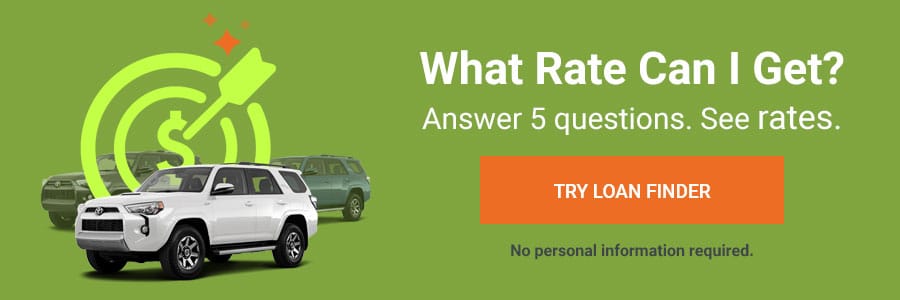Find out what you can do to improve your finances and live a higher quality life.
If you’re struggling with debt, you’re not alone. After all, the average American has $90,460 in debt. Fortunately, you don’t have to live with debt forever. There are a variety of strategies to help you save money and pay it off.
By becoming debt-free, you can improve your credit score, reduce stress, and put your hard-earned money toward other financial goals like buying a house or car, retiring, or saving for college.
Types of Debt
In general, personal debt falls into two main categories: secured and unsecured — let’s take a closer look at what that means.
Secured debt
When you offer the lender collateral, or an asset you own, in exchange for borrowing money, that’s secured debt. While it’s often easier to qualify for, it can be risky. Here’s why: If you default on the loan, the lender may seize your asset. Some of the most common examples of secured debt are car loans (which are secured by your car) and mortgages (which are secured by your house).
Unsecured debt
Since you don’t have to pledge any assets as collateral, unsecured debt is less risky. The caveat with it, however, is that it usually comes with stricter requirements. If you don’t have good credit, you may find it difficult to get approved for an unsecured loan or have to settle for high interest rates and unfavorable terms. There are many types of unsecured debt including credit cards, some personal loans, medical bills, and student loans.
How To Prioritize Debt Payments
Not all debts are created equal so it’s important to prioritize them based on your unique goals and preferences. The debt avalanche and debt snowball are two debt payoff methods that can help you do so. Here’s a brief overview of what they are.
Debt avalanche
The purpose of the debt avalanche strategy is to save the most money in interest over time. If you go this route, you’ll prioritize paying the highest interest rate debt as quickly as possible. This debt repayment strategy involves making the minimum payments on your other debts, then putting all the extra money you can afford toward your highest interest debt.
Once you pay it off, you’ll move on to the debt with the next highest rate. You’ll continue this process until you’ve paid off all your debts. If your goal is to save as much money as you can, and you don’t need a lot of motivation to stay on track, the debt avalanche could be a good option.
Debt snowball
With the debt snowball method, you’ll pay off your smallest debt first and then apply the payments you were previously making toward it to the next smallest debt. You’ll do this until you’re debt-free.
The debt snowball allows you to build momentum or “snowball” your payments as you pay off each balance. If you’re overwhelmed with debt and want to celebrate small milestones, the debt snowball can keep you motivated.
Debt Payoff Strategies
There are several debt payoff strategies that can help you with your debt reduction, such as:
Debt consolidation loans
Debt consolidation loans are essentially personal loans that allow you to roll multiple debts into a single, manageable payment. Once you take one out, you can use the money you receive to pay off your debts, ideally at a lower interest rate.
A debt consolidation loan can make paying debt easier because you’ll only have to make and keep track of one payment instead of multiple. It may make sense if you have many high-interest debts and want to streamline the process.
Credit counseling
With credit counseling, you work with a credit counselor who designs an affordable monthly payment plan. The plan may give you the chance to lock in lower interest rates that a counselor has negotiated on your behalf. Credit counseling can protect you from aggressive debt collectors and delinquency.
Debt settlement
Debt settlement is when you negotiate with your creditors to settle for less than the outstanding balance of your debts. You can do this on your own or invest in professional debt settlement services to handle it.
If you work with a company, you’ll make a monthly deposit into a special account. As your account balance increases, they will contact your creditors and negotiate lower settlements. Debt settlement may be worthwhile if you have many, high unsecured debts. It can’t help you with secured debts like your mortgage or auto loan.
Refinancing
Refinancing is when you replace your current loan with a new one. Hopefully, your new loan will have a lower interest rate and better terms. If you have an existing loan, refinancing can reduce your monthly payment and save money on interest.
According to RateGenius data, 42% of customers saved over $1,000 a year by refinancing their car loan. In 2020, the average annual savings was $989.72. That’s a good amount of cash to put toward debt.
Bankruptcy
Bankruptcy is a legal process to help you if you’re over your head in debt. You may qualify for Chapter 7 if you have little to no disposable income. With Chapter 7, you sell most of your possessions so that your debts can be repaid.
If you’re ineligible for Chapter 7, Chapter 13 might be an option. Chapter 13 involves a repayment plan that usually lasts three to five years. Bankruptcy can only help with unsecured debts and should only be considered after you’ve exhausted all other options.
Money Saving Strategies
The more money you have, the easier and faster it will be for you to pay off debt. Several money saving strategies to consider include:
Create a budget
A budget can help ensure you save some of the money you earn, and set aside an emergency fund for unexpected expenses. Here are a few budget options to keep in mind.
- 50/30/20: The 50/30/20 budget is when you allocate 50% of your after tax income toward your needs, 30% toward your wants, and 20% toward your savings goals.
- Pay Yourself First: With this budget, you figure out how much money you earn after taxes and subtract your expenses. The number you come up with can give you an idea of how much you can set aside to “pay yourself first.”
Automate
If you’re worried you won’t stick to your savings goals or want to make saving as easy as possible, automate your savings deposits. This way some of your income will automatically be transferred to your savings accounts. The greatest benefit of automating your savings is that you’ll be less likely to miss the money because it was never available for you to spend in the first place.
Avoid credit card debt
A big part of debt management is spending wisely, especially when it comes to swiping your credit cards. It’s easy for your credit card balance to quickly exceed your budget when the charges aren’t coming directly out of your checking account. If you want to continue using credit cards and building your credit score, make immediate payments to prevent out-of-hand spending.
If you have substantial credit card debt, you could consider a balance transfer of your high-interest credit cards to one with a low interest rate, ideally one with an introductory offer of 0% APR.


Cut expenses
There are many ways to lower your monthly expenses. Start by taking a close look at your bills and credit card statements, then figure out what you can reduce or cut. Get rid of subscriptions you don’t use, eat at home instead of dining out, and buy generic name groceries instead of brand name. If possible, consider moving to a house or apartment with a lower rent or mortgage.
You might have to get creative, but reducing your expenses can be a worthwhile step in your personal finance journey.
Earn more income
Nowadays, there are lots of ways to earn some extra income. Consider a side hustle like delivering food, selling items online, or driving for a ride-share company. You can also pick up a part-time job at a retail store or restaurant. With more income at your disposal, you’ll be able to save money and pay off debt faster.
Choose the right savings account
There are a variety of savings accounts to help you save, and even earn money. It’s a good idea to familiarize yourself with your options so you can choose the right ones for your specific goals. Some savings accounts you might want to consider include:
- High-yield accounts: It makes more sense to keep your savings in a high-yield savings account than a checking account or traditional savings accounts. High-yield savings accounts come with higher interest rates, allowing you to earn more in interest with virtually no effort.
- Tax-advantaged accounts: Tax-advantaged accounts can help you reduce your tax burden while your money grows. The most common tax-advantaged accounts are retirement accounts like 401(k)s and IRAs. healthcare accounts like HSAs and college savings accounts like 529s.
- Employer-matched accounts: If you work for an employer, there’s a good chance you have access to an employer-matched account like a 401(k). Your employer’s match is a percentage of what you put in your 401(k). While matching formulas vary, many employers offer a 50%, meaning they’ll put in 50 cents for every dollar you put in, often up to 6% of your pay.
Don’t Give Up
There’s no denying that saving money and paying off debt is easier said than done. The key to achieving the debt-free lifestyle you want is dedication and persistence. If you design a plan for how you’ll pay off debt and make every effort to follow it, your debt will slowly but surely disappear. Best of luck in your journey to a healthy, secure financial future.
;)



